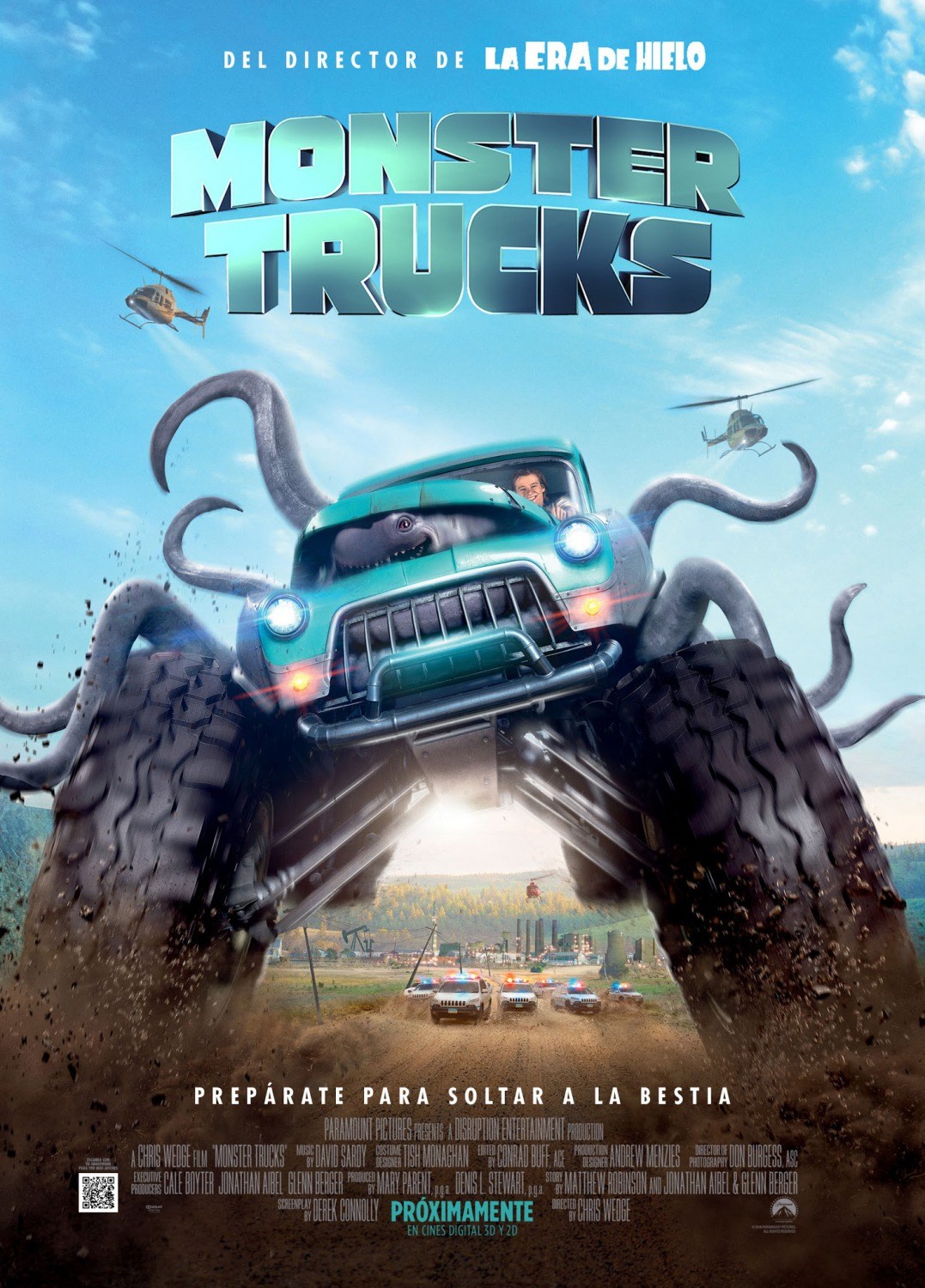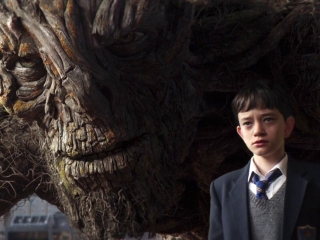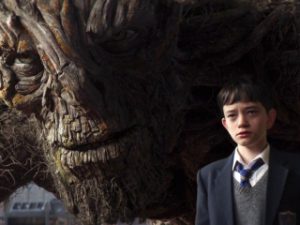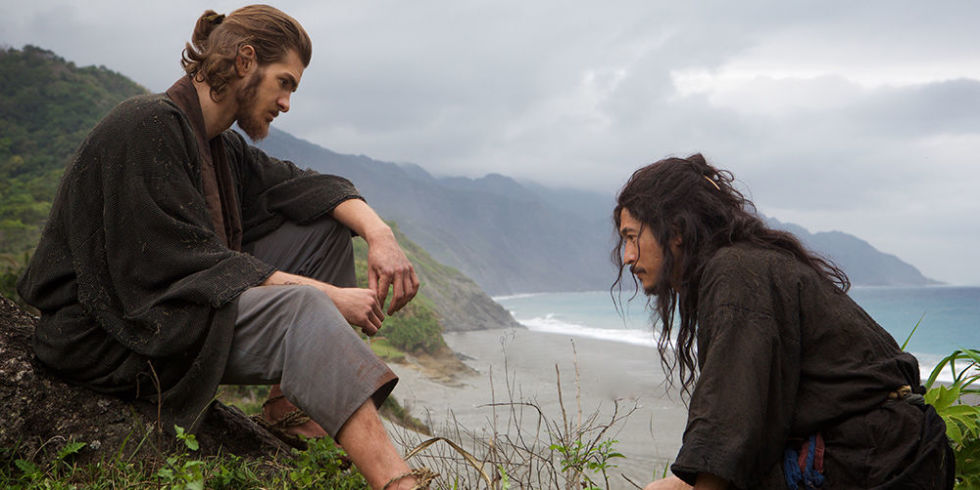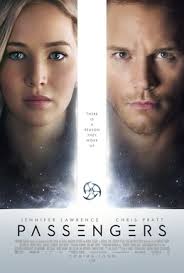Monster Trucks
Posted on January 12, 2017 at 5:21 pm

Tripp (Lucas Till, game but about eight years too old to play a teenager) lives in North Dakota with his mom (a barely seen Amy Ryan) and still misses the dad who abandoned them (Frank Whalley, suitably seedy). He does not like his mother’s boyfriend Rick (Barry Pepper), a cop who is fussy and by the book. And he does not like school, which he barely acknowledges. He spends much of his time working at the junkyard run by Mr. Weathers (Danny Glover) and spending his spare time using the parts he finds there to build a truck he can drive.
Nearby, a big oil drilling company run by ruthless Reece Tenneson (Rob Lowe) is under pressure to produce. Their scientists locate a water table above the oil reserve. Under environmental and endangered species laws, they should not drill without further investigation. But Reece insists they go ahead, and the drilling releases three squid-like creatures who live on oil. They capture two, but the third escapes and ends up in Mr. Weathers’ junkyard, where Tripp is at first terrified, then fascinated, then, after they bond over throwing stones at one of Reese’s trucks together, captivated by a creature he names, without much imagination, Creech.
Somehow, the best way to hide and transport Creech turns out to be using him as the engine of a tricked-up truck with big wheels. Soon Tripp and his classmate (Jane Levy as Meredith) are on the run to keep Creech from being captured by Reece’s enforcer, Burke (Holt McCallany) so they can poison the creatures and keep drilling for oil.
There’s nothing new here, but it is good-natured fun, with special effects that seamlessly integrate Creech into the action. It would have been nice to see Meredith as something more than the brainy girl with a crush and a credit card, and the film is half-hearted at best when it comes to Tripp’s careless treatment of a kid who wants to be his friend, expecting us to laugh at his presumption. As a January Saturday matinee or an outing for a third grade birthday party, it hits the spot.
Parents should know that this film has extended mild peril, with chase scenes and threats. No one is badly hurt. There is some schoolyard language and brief bodily function humor.
Family discussion: What qualities of the creatures made Jim decide they were worth saving?
If you like this, try: “Transformers” and “Free Willy” — and a Monster Truck rally!

